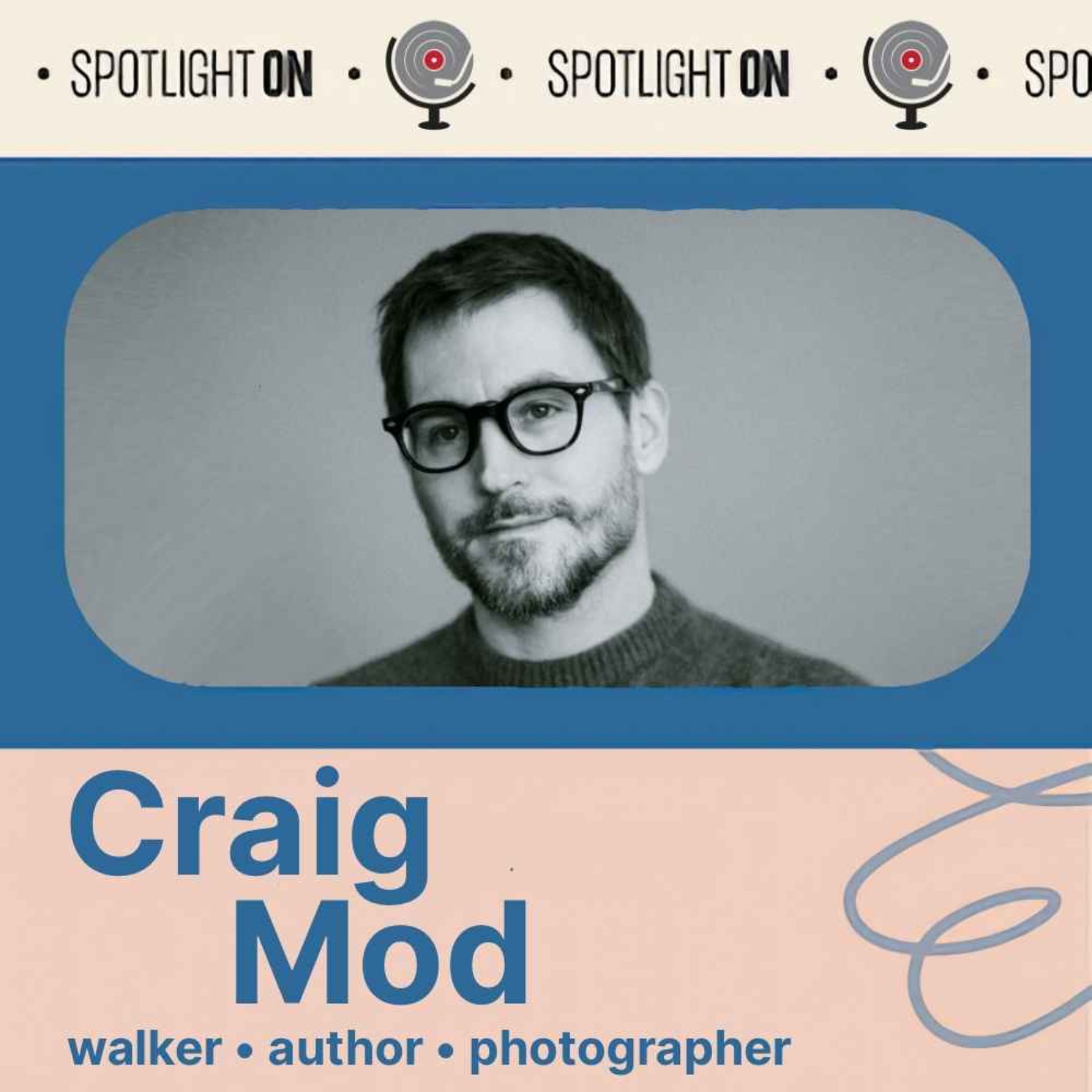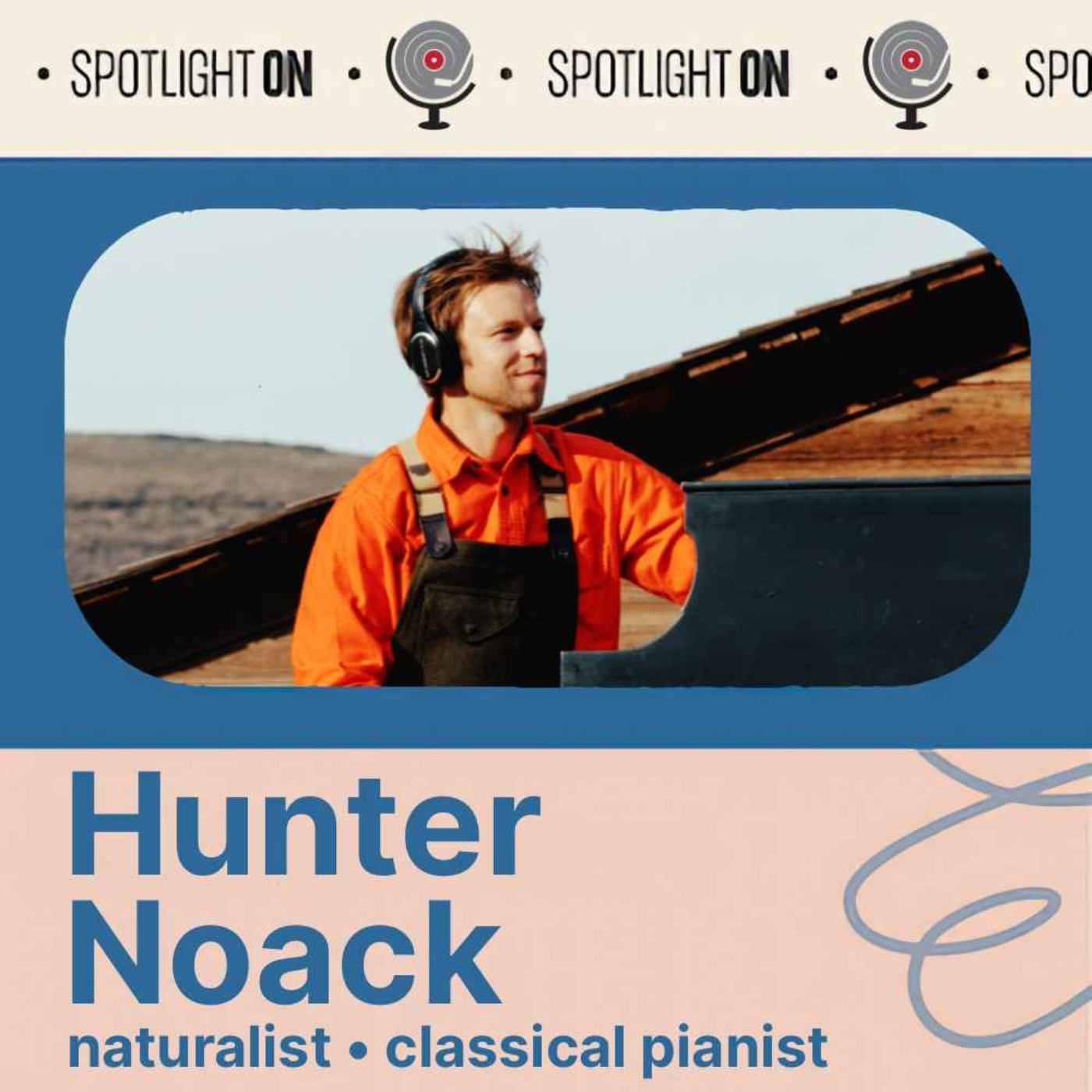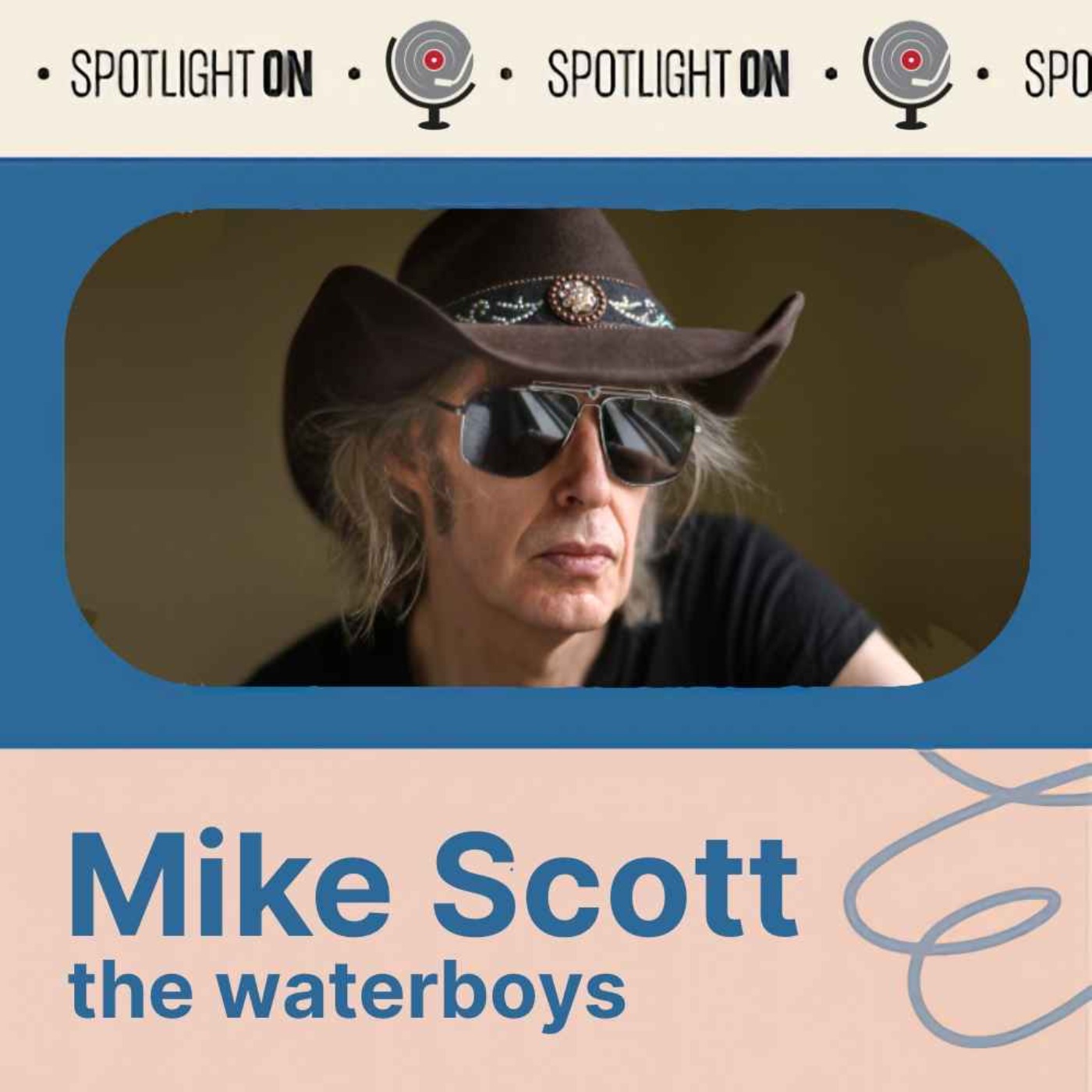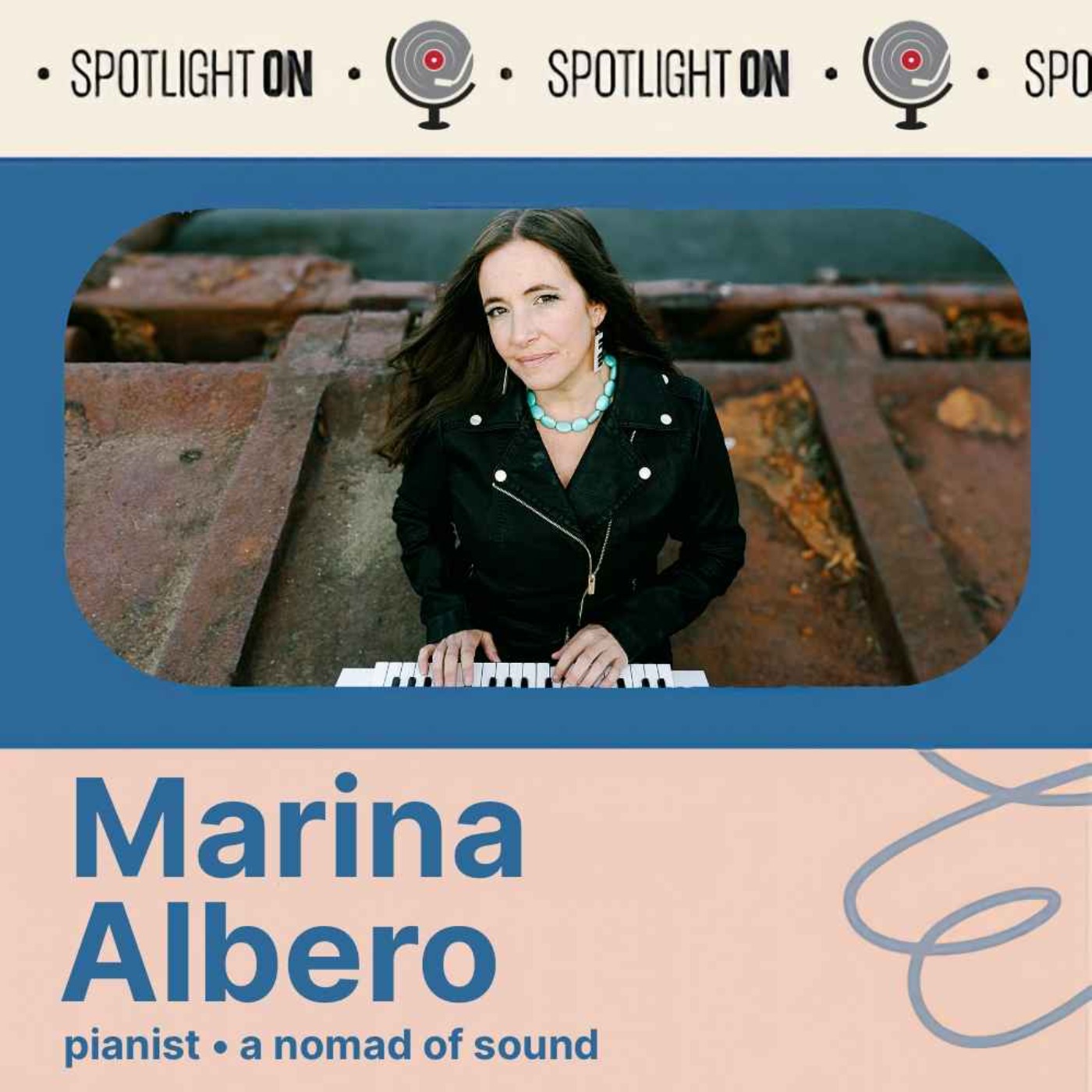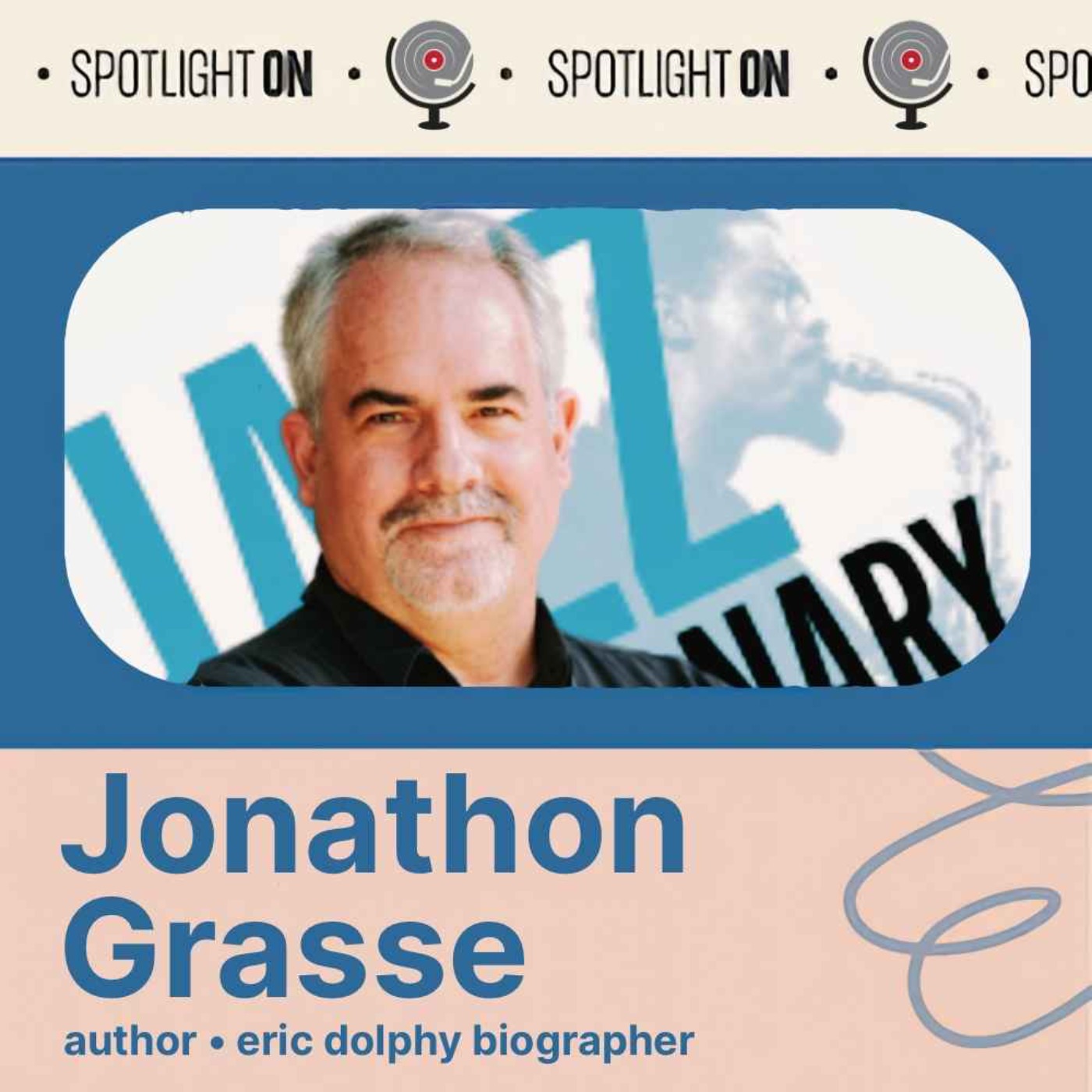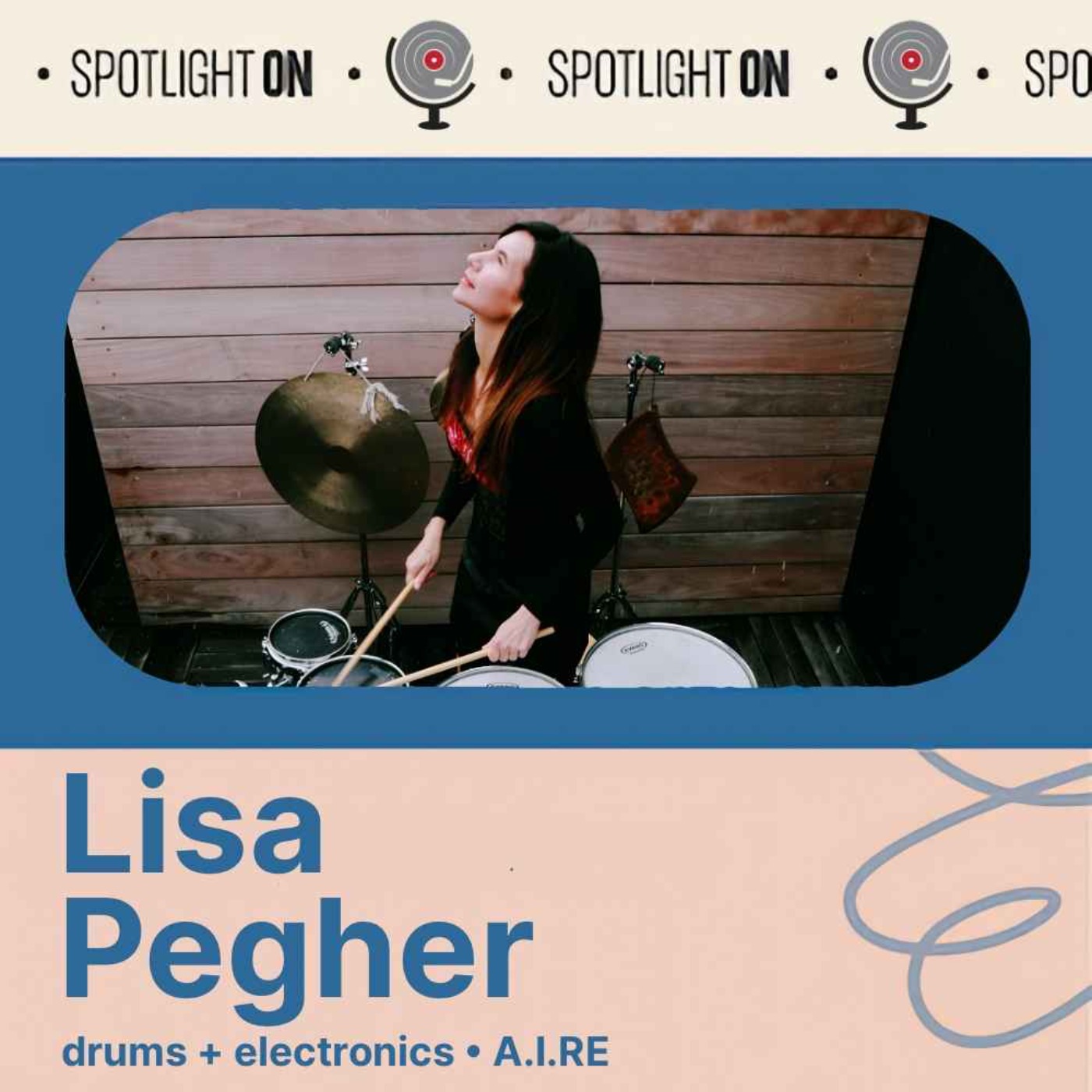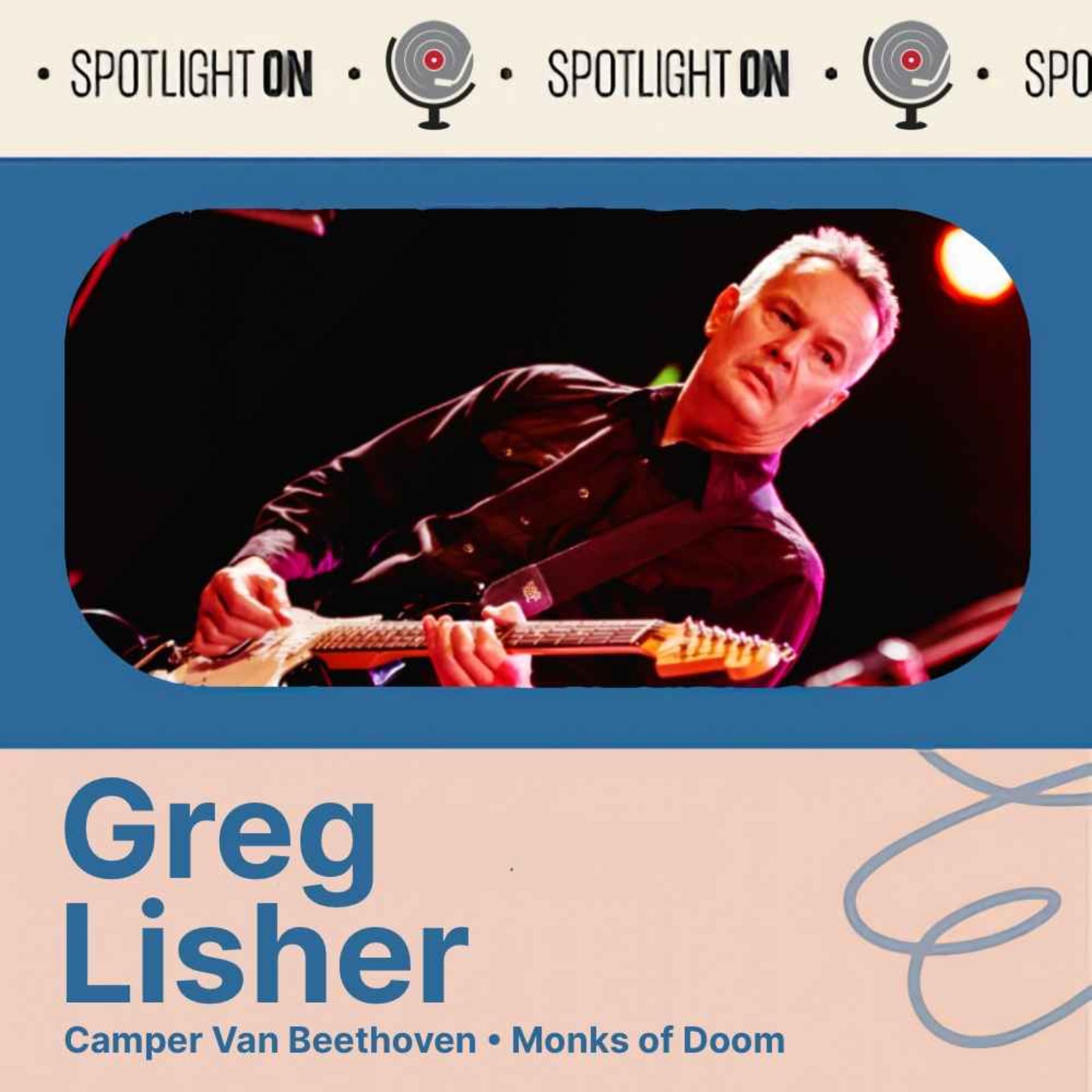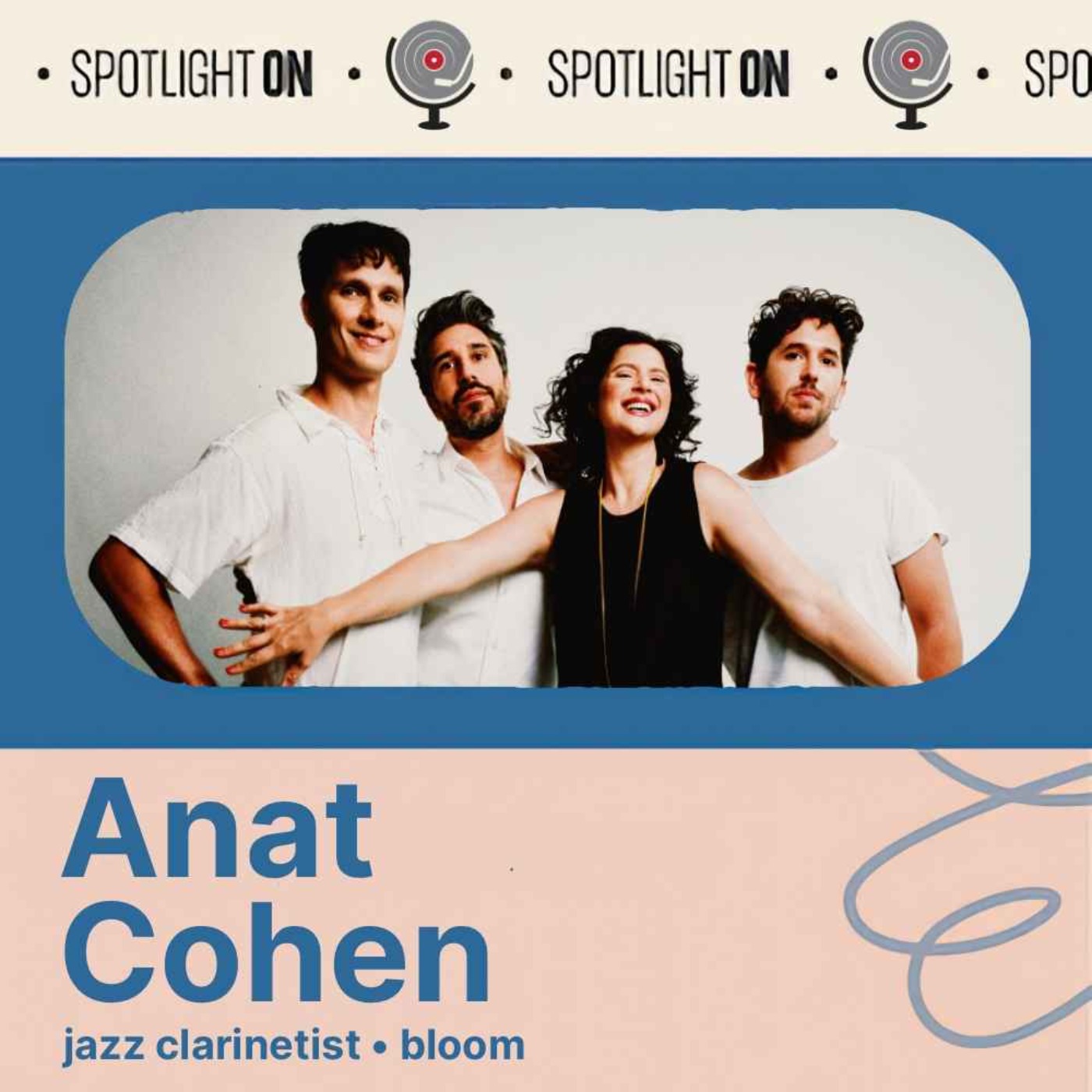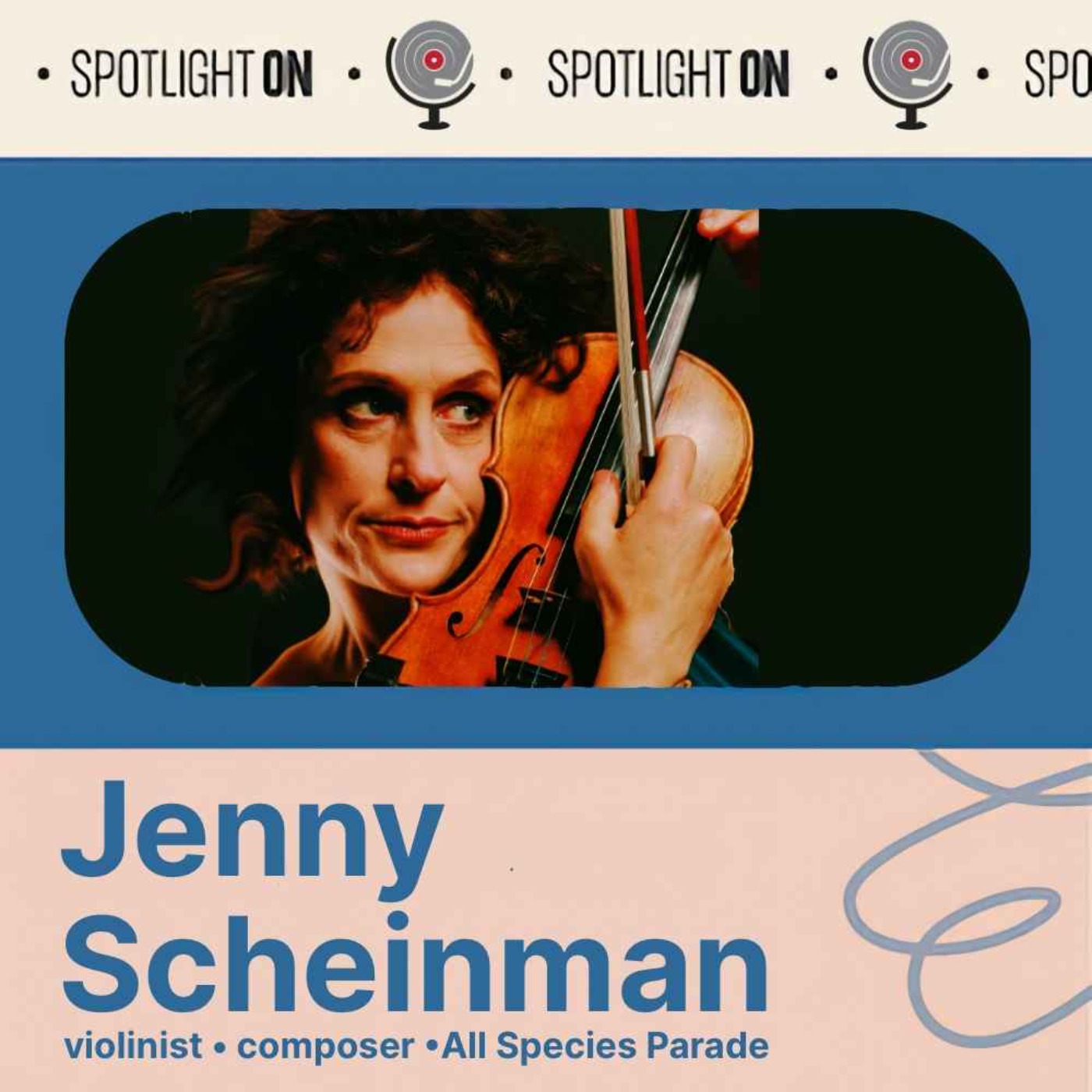Shawn Mativetsky: a tabla adventure through Temporal Waves
The renowned Canadian percussionist, tabla player, and educator discusses his lifelong embrace of Indian musical traditions and the fusion with synthesized textures that inspires his project Temporal Waves.
Today, the Spotlight shines On composer and percussionist Shawn Mativetsky. A renowned tabla player, Shawn is a pioneer in bridging the worlds of Western and Indian classical music.
We discussed the intricacies of traditional Indian music, including the setup and tuning of the instruments, the guru-disciple relationship, and the reception of Western musicians in the Hindustani community. We also explored the importance of deep learning, consistent practice, and research in mastering a musical instrument, with Shawn sharing his personal journey and commitment to his craft.
Shawn and I spoke much earlier this year, around the April release of his album, Temporal Waves. Enjoy.
(The musical excerpts heard in the interview are from the album Temporal Waves)
–
Dig Deeper
• Visit Shawn Mativetsky at shawnmativetsky.com
• Visit Temporal Waves at temporalwaves.com
• Purchase Temporal Waves on Qobuz or Bandcamp, and listen on your streaming platform of choice
• Follow Temporal Waves on Instagram, Facebook, Threads, and YouTube
• Intro to Tabla & North Indian Rhythm – Shawn Mativetsky
• Introduction to Classical Tabla
• Best of Both Worlds: Composer-percussionist Bob Becker
• Pandit Sharda Sahai
• Jace Lasek
• The Many Faces of Cyberpunk: 3D Worlds of Sarper Baran
• Stranger Things: the synth band behind the Netflix series' haunting score
• Canadian Percussionists: Shawn Mativetsky
–
• Did you enjoy this episode? Please share it with a friend! You can also rate Spotlight On ⭐️⭐️⭐️⭐️⭐️ and leave a review on Apple Podcasts.
• Subscribe! Be the first to check out each new episode of Spotlight On in your podcast app of choice.
• Looking for more? Visit spotlightonpodcast.com for bonus content, web-only interviews + features, and the Spotlight On email newsletter. You can also follow us on Instagram, Facebook, and Mastodon.
(This transcript has been lightly edited for clarity.)
Lawrence Peryer: For the benefit of our listeners, Shawn is sitting in front of an amazing collection of instruments. Are all of the instruments behind you tabla?
Shawn Mativetsky: Yeah, and there are two more shelves that you don't see.
Lawrence: Wow, so what is the significance of that? Is it a tuning thing, or could you talk about it?
Shawn: Sure. As you said, the tabla is a tuned instrument, so depending on the piece's key, you need a different pitch, and the tabla is made for a specific note. You can modify it a bit, and you can go down maybe a tone or so, like one note. And it'll still sound OK. But it doesn't sound good if you go outside the range.
So, over time, it's not like I got all those in one day. Usually, we start with like a C pitch and then maybe, "Oh, I should get a D," and then, "Oh, it might be nice to have an A-flat," and then it's sometimes handy to have two of the same pitch, in case something happens. I'm not in India; I'm in Canada. So you need to have backups, right? Doubles of some of the more common pitches that I use more often. And so yeah, over the years, things accumulate a little bit.
Lawrence: Are they tuned to the Western scale, or are they microtones, or how does that work?
Shawn: In the traditional context, you tune to whatever the other musician's instrument sounds like. So if I'm accompanying a sitar, some sitars will tune D on an A440 basis, like a regular D. Some will use 432 or some other tuning, not without any reference, like they may just tune their instrument. It sounds good there. And then I tune to them. Musicians doing more cross-cultural collaborations will tend to tune on the regular 440.
Also, many musicians are now using apps for the drones and the Tanpura drones you hear in performances. And so when you're using the app, it tends to be in 440. You can move it, of course, but for simplicity, most musicians stick to Western pitches. Otherwise, within the scale of a raga, it's natural tuning. But we're only concerned with the first note and not the other intervals after that for the tabla because we're only tuning one note.
Lawrence: Gotcha. I know we're here to talk about your latest project, Temporal Waves, but I wanted to ask you a little bit about the development and journey of a young percussionist. I'm so fascinated by what I perceive as a little bit of a unique journey to your instrument because I perceive you as an exceptional player. I would love it if you could tell me where you started. Were you the kind of kid who was faced with piano lessons, or did you originally play a trap drum set? You know, how did you end up where you are now?
Shawn: In elementary school, music class was just singing; the teacher would play piano, and we would sing songs. Sometimes, other kids would come in with a lute or a guitar or play something for the class. And then, so I started to get the idea, "Oh, I would like to learn an instrument too." So my parents called the local music shop and read about their classes there. Clarinet, flute, organ, piano, drums, none of that, "Oh, drums—that sounds like fun." Looking back, it feels like a kind of random choice, but I'm sure it wasn't that, you know, I must've had some tendencies towards banging on pots and pans and things like that.
So, at seven, I started with drums, lessons, reading music, and then continued with a drum kit. In high school, I played in the concert band and all that, so I picked up on some Western classical percussion, and then when I was around seventeen, I heard tabla for the first time, and I was just blown away immediately, like, "Wow, what is this? You know, what's this amazing sound?" And it wasn't Indian traditional music. It was some fusion recording. I looked at the CD liner notes and went through all the instruments, and I knew what they all were. There was just something called tabla that I didn't know. So, just by the process of elimination, that cool sound I heard must be tabla. It was pre-internet.
I went to the library and found out that these are some drums from India. So I bought a set of tabla, and I'm like, I'll be able to figure this out. It's no problem. I sat down on the floor with my brother, and we hit the drums in different ways. Nothing sounded like what we heard in the recording—just no chance. Then I understood I had to find a teacher. I had a few lessons with one person. He got me started, maybe just five lessons or so, really not much. And then I had to find another teacher. And then, I studied with him for a couple of years. It was one percussion instrument amongst many, and I would integrate it into my schooling however I could, whether it was like open projects or I was trying to find pieces by composers written for tabla. Still, I would play whatever I could get my hands on.
So, in baby steps, I started going to Toronto to study with Bob Becker, a well-known Western classical percussionist who also achieved a very high level on tabla. He said from the beginning, "I'll teach you, but you should go see my guru, like his guru, as soon as you can."
But when I studied with Bob, like, I studied with him for five years, and then finally I had the chance to meet his guru, Pandit Sharda Sahai, who became my guru, and I studied with him until he passed away at the end of 2011. And still, you know, I'm continuing the Western classical percussion and taking gigs with orchestras all through this time. Tabla has always remained my favorite instrument, but I never thought I could be necessarily a tabla player. I wasn't born into this culture, but I just kept at it, and I kept studying and practicing, and then I started getting called more for someone who needed a tabla player, and they would call me, and it started to happen more and more. And so then. So, the music styles and contexts vary, but the tabla is my instrument. This is like my daily life revolves around this instrument. So I've been very lucky, very fortunate to have had, first of all, an amazing teacher, and somehow, through a bit of luck and circumstance, this path came before me, and I'm able to earn a living as a tabla player somehow.
Lawrence: So, it looks deceptively simple. It's two drum heads and two bowls, yet there's a lifetime of study behind what you do. Could you articulate a little bit about what study means in the context of this drum? How far can you go?
Shawn: I still have to determine that last part. It's infinite. The idea is first to find a teacher. It's not an instrument you can learn from books or YouTube videos. It's really when you become a disciple of a guru, and it's like becoming an apprentice of a master. You enter into a long-term commitment to each other, so the idea is you don't change teachers.
It's very different from the Western tradition, where you study with many people. So once you enter into this formal relationship, that's your teacher for life. You see your teacher as much as possible, as often as possible, and for as long as possible. So, I would see my guru, usually three times a year, for three weeks to a month.
And then every day we see each other, right? Not once a week, right? It's every day. Go in the morning; he's already practicing; no matter how early I went, he was practicing. I would sit down and try to keep up with him for two or three hours. This was just his morning warm-up routine. Then maybe he would give me a lesson, then we'd have lunch together.
Then, after lunch, if I didn't have a lesson, I'd have one, or if I had a lesson in the morning, he would say, "Go practice." Maybe we'd watch TV together. There are lots of daily things, right? Not just musical things, but like grocery shopping, going to the post office, doctor's appointments, or regular stuff.
So, it's the music, it's learning the music, but it's learning much more than that, really learning about all aspects of life. From a professional standpoint, you know, let's say he had a concert; of course, as students, we carry the instrument for him, this kind of thing, but at the same time, it's like hanging out backstage, seeing his pre-concert routine, see the interactions with the sound technician, how he goes about getting the sound he wants: the soundcheck, all the preparations for the concert, and all the behind-the-scenes stuff.
It's like a full education, not just how to play the instrument, but all that goes around in the profession and aspects of life. It's a very deep relationship. It's like becoming a family member; you're together as much as possible.
Lawrence: If you were a student growing up in Northern India and you had a guru, would you live with them?
Shawn: So some teachers do that, some don't. It was like that back in the olden days, but otherwise, you would usually live somewhat close to them. You don't have to live there necessarily, but you would visit their house daily. So my guru split his year, mostly living in London, England, and wintertime, he would go back to Banaras, or Varanasi as it's known now.
In his neighborhood in Varanasi, Kabir Chaura is a traditional musician and dancer's neighborhood, and you just walk through the little alleys. Everywhere you turn, you can hear music being practiced. You know, you hear someone singing, or you hear sarangi, you hear tabla, you listen to dancers with their ghungroo, their bells around their ankles, just walking all through the neighborhood because it's all musician families and musician houses, like very traditional artists' neighborhood.
And maybe you're not living with your guru, but you're just down the street from them, around the corner, or something similar.
Lawrence: Is Pandit an honorific or a title? What does that word mean?
Shawn: There's Pandit and Ustad. Pandit is the title given to Hindu musicians, and Ustad is the title given to Muslim musicians. It's basically like a maestro. If you become a well-known, respected musician, people call you that. So there's a, you can imagine, a transitionary period, maybe where some people might be calling you Pandit and some people are not. Then, eventually, perhaps it sticks because you've become a respected musician. So yeah, it's not like a formal certificate or degree or something like that. But I guess it's similar to a maestro. It's a term of respect.
Lawrence: Did you encounter cultural resistance? Is the community of Hindustani musicians excited about having a Western student or a Western face amongst them? Or was there an element of appropriation, bad vibes, or anything else?
Shawn: It's funny because in my guru's family and community, whether in London or back in India in Banaras, people were so welcoming and so happy that, "Wow, someone from outside our culture is so interested and so serious about the music. Look at all the time he's putting in. Look at all these trips he's making;" It was seen as a very positive thing, so I was very welcomed. Sometimes, I hear comments from people within the South Asian community, like, "Our kids aren't interested in this music, like the classical music; it's not popular music. But look, you're not even from this culture and devoting your entire life to it."
Where the questions of cultural appropriation may come up, there are these kinds of skepticism. It's more outside of India that these kinds of things happen. Like I accompany an Indian dancer, and sometimes when she books a show, they're like, "Oh, is this the tabla player you want?" And she's like, "Yeah, he knows my repertoire, and I know I can count on him." And I think it's normal because some people don't follow the tradition, maybe haven't immersed themselves enough, and they're making missteps without knowing that they're making missteps. And so I can understand the need to prove myself and this kind of thing maybe, that's OK because some people are unfortunately misrepresenting themselves.
So, for example, like in the tradition, you need your guru or your teacher's permission before you take professional engagements. So, before you start performing publicly, you need permission. Before you begin teaching, you need permission. But many people don't know that, the tradition, right? Like from outside the culture, they don't necessarily know. I've seen someone who's gone to India for six months and then return and start teaching.
Lawrence: Wow.
Shawn: Usually, when people ask me how long it takes to be able to play tabla, I say, "After ten years, you become a beginner." So it's like six months. I don't know what this person's teaching is. It's a very long-term commitment, and for how long I've been playing tabla—it's around thirty years at this point—I still feel like I don't know very much and that I have many more years of practice and absorbing of the material that my guru taught to me, to be able to do justice to it.
It's a never-ending thing; you're always hearing and seeing things from a new angle and way. You're always learning something new without necessarily learning new compositions. It's not about amassing repertoire, going deep with what you have because some of them are fixed compositions, and you play them just as they are, and others, they're seeds for improvisation. What ideas can you come up with to improvise on that theme? How far can you go with it? So there's always some discovery, something new, or you go to a concert, and someone else plays that composition in a new way. Ah, I never thought of it that way before. Yeah, there's always something new.
Lawrence: It's fascinating because, again, you know, as a listener and as a recreational user of the music, it's such a powerful and unique instrument. Given the deceptive simplicity of the instrument, what's the initial hurdle to being able to create? What's the first lesson that you have to learn?
Shawn: For many people, it's just to be able to sit for a long time. Yeah. And there are old stories of gurus who would make their students just sit for two or three hours before they would teach them anything. I haven't witnessed that myself, but there are stories like that. We need to practice for an hour a day at first. Two hours a day, three hours a day, later, when it becomes more serious, we're practicing six hours a day, eight hours a day, this kind of thing. How can you practice for six hours if you can't sit for six hours in the day? So, for some people, that is a hurdle. But really, just to be able to make a nice sound takes time. We practiced a lot of phrases. So, we repeat short phrases, and then we increase the speed. It requires a lot of repetitive focus practice, hours, and many years. When you feel the music, you don't feel it like a chore, right? It's something you want to do, and you enjoy doing it, right? The enjoyment is there. And that's the thing, too. In my case, you know, what drew me to the instrument was the sound of the instrument. So, as you hear the sound improving, your enjoyment also increases, right? Because you're getting that sound, you've been longing for that interested you.
Yeah. The other challenge is the speed. And that also takes time. Like learning anything, I think you have a lot of quick improvement at first. And then, as you get better, the progress slows down, right? And you have to do these marathon practice sessions just to inch up that little bit faster or that little bit clearer, some of that kind of practice we do in groups too, it doesn't have to be alone, but certain kind of practice, of course, any kind of nuanced practice you have to do alone.
Lawrence: Is there any repertoire for tabla as an ensemble, or is it always an accompaniment instrument?
Shawn: So it's funny. I teach at McGill University, and we have a tabla ensemble there, but it's not traditional. So, the tabla can be an accompaniment instrument or a solo instrument. And the bulk of what we learn in tabla lessons is the solo repertoire. Right. So, you know, it's a byproduct of a group class. If you have a group tabla class and want to have a class concert, if you're going to have a duo or trio of tabla players playing together, it's a solo repertoire being played as a group.
Lawrence: At McGill, are you in the context of an ethnomusicology department or what program you teach in?
Shawn: No, for me, I teach lots of different things, but mainly performance. I fit in the percussion department, which is part of the Western classical.
Shawn: We just have Western classical and jazz. There is musicology and ethnomusicology, but it's smaller. I teach other classes. I teach an Indian rhythm class. I teach in the music education area. I teach lots of different kinds of things.
Lawrence: I've been doing this podcast for several years now. I've talked to a couple of hundred guests and artists, and it's only been in the last couple of weeks that I've realized that what I see in the biographies of many music artists I talk with is they use the word research for their work. Could you shed any light on that? Do you think of your practice or your work as research?
Shawn: So when you're creating new music, like for Temporal Waves, I had to go through a process of exploration. I had to go through a process of learning, you know, working with analog synthesizers and creating sounds. And, like, that's research. Research is not just reading books and things like that; you know, it's information, and it's also experimentation and exploration. That's also part of it. Sometimes, it can be research, like reading about things or different kinds of interpretation. That's research. We listen to performances to inform ours. That's research. I mean, there are lots of different ways of looking at it.
Lawrence: When you began the work for Temporal Waves, did you have a concept in mind, or what journey did you go on in making this record?
Shawn: Research.
Lawrence: All right. Thanks for being here. [laughter]
Shawn: I mean, I wanted to get back to something I had been doing in the nineties, but from a different angle. In the nineties, I was doing electronic music as a serious hobby. I was involved in the Tracker scene, an early way of making music with computers. I also started to get into synthesizers, but it was a hobby. It was not part of my professional music-making. And so I set that aside for many years. And, like the pandemic gave us all a bit of a pause, time to reflect, what would I like to do next?
Another aspect that came out during the pandemic was the sense of comfort and nostalgia, and there's a comfort aspect to nostalgia when thinking about youth and these kinds of things. So, reminiscing about these things, the electronics, growing up with Atari and Nintendo, these things at the same time, shows like Stranger Things, and bringing back these kinds of retro 80s and 90s vibes. And it's like, I would like to revisit electronics. But now I was seeing something that I hadn't seen before. I was seeing it now as I can integrate tabla with this. I was seeing it from a very different perspective. Now, electronics are technological and cold, and they like reminiscing about these nostalgic sounds. It makes the electronic sounds warm.
Lawrence: Yeah.
Shawn: Now I saw how the tabla could connect because the tabla also has a very warm, organic sound. Now, I didn't necessarily have the concept. I didn't know that the music would be a kind of, maybe, ambient experimental synth-wave; I'm not sure what label to put on it, people hear it differently. It doesn't sound like Indian music on the surface, other than that the tabla is there. It fits; it's electronic music, but I got a research grant from the Canada Council for the Arts. I started buying guitar pedals, processing the tabla through pedals, and seeing what kind of different things I could come up with. So this was more improvisatory, more free. And I got some synthesizers and started to play with them. Then, it became clearer what was going on and more of a connection from piece to piece.
So, even going into the studio to record, not all the pieces were composed. So, the interludes, right, on the album, those were like processes of experimentation in the studio. I had the ideas, but I didn't have the equipment or all the expertise. So I needed Jace Lasek, the engineer who did the mixing and was the co-producer. I needed his help to make these things happen, so I went in with ideas, but we had the time in the studio to try things. We had time to experiment in the studio and create. So that's like a luxury that usually we don't have.
Lawrence: What will the live presentation of this music look like?
Shawn: So definitely all the tabla I would play, and when there's not tabla, I would be playing synthesizers, and then I would have to rely on some prerecorded things for a couple of reasons. I could bring a bunch of synthesizers and have them be sequenced live, but on a technical level or a logistic level, you know, touring with that amount of synthesizers, even though I'm sure people would love to see them all, it would be very difficult to travel with, the setup time would be big. Hence, things break down. The other reason for the backing tracks is that many of the effects would require me to have all kinds of tape machines.
And again, while I'm sure the audience would love to see that gear. I would love to see some of these effects that are made in the studio, but it's very hard to reproduce them reliably live. So yeah, I would play tabla and some synth. I would also use some guitar effects pedals for live processing of the tabla sound and the synthesizer sound. The dream would be to have two people with me who could be playing the synths so that it's all being produced live. You know, I'm a performing musician, so I appreciate, you know, playing with other people and having that interaction on stage and someone playing everything that you hear.
Lawrence: What environment would you like to perform this music in, or what type of room would you prefer? Is it a jazz club? Is it a rock club? Is it a warehouse? Do you think about that at all?
Shawn: One of the main goals of this project, aside from the musical inspiration, was to bring tabla to new audiences. And I'm seeing that already. I've been hanging out online with some people in the synth-wave scene. Many people are hearing tabla for the first time, and that's great. They're hearing it in a new way. And so I'm very happy about that. Because one of my general goals is to spread awareness of the instrument and the tradition. So even though you hear the tabla in a completely non-traditional way in this context, if I can open the door for people, you know, as a kind of gateway into the tabla or Indian classical music, that would make me very happy.
This music can be presented in many places, from traditional concert halls to pop and indie festivals. Yeah. Something I want to develop is video projections. Because for me, I see this music as kind of very like, cinematic, and you can imagine things right as you're listening to it. For me, it evokes different imagery, and I like the titles of the pieces. I'm maybe imposing certain imagery, but, you know, retro-future sci-fi things.
Lawrence: Yeah. It's interesting that you touch on that. I've had conversations with other artists, and the theme or the idea that seems to emerge that we all circle around is that there seems to be something very specific about the transition of the analog into the digital. I think it applies to audio and video technology. You think about the cathode ray video and how it manifests on your album cover. There's something about that aesthetic that seems to resonate with people, and where the digital instruments, the analog instruments, and the human players, that mixture of the mechanical and the human before it was so perfect with digital. There's something very special about that combination.
Shawn: Yeah, you mentioned a couple of things. So one about the kind of the CRT and my album cover, I almost put a CRT overlay on that image so that it would have looked like it was on an old TV, but I decided not to do that because I didn't want to distort the artwork of Baran Sarper. He's a Turkish digital artist, and his artwork is very detailed. I didn't want to mess with it.
Lawrence: Yeah. Yeah.
Shawn: And the idea of digital, we were recording things on cassette tape, four-track recorders, these kinds of things. And we went to digital recording, CD quality, and everything else. And we were just trying to make everything as pristine and perfect as possible. The recording is 24-bit, 96 kilohertz, which is perfect and crisp. It's older, like analog technology, CRT, VHS, reel-to-reel, and all these things. For me, it brings these little human imperfections into, so it's, it just gives something special to the sound, you know, and it makes us think of these, this old equipment, these things that were not perfect, this imperfect technology. It connects back to that time, and there's just something about guitar pedals, synthesizers, and the hands-on nature of it, right?
And it's an instrument itself. You have knobs and sliders, and you turn the knob, and something happens, right? Like, you move the slider, and something happens. It's something very complex and very simple at the same time.
Lawrence: Given the commitment you've made with teachers and your specific teacher for so long, what did you come away with from that experience as a student that's made you a better or more sensitive teacher?
Shawn: One is the personal aspect. I think, you know, all teachers care about their students. I think that's normal. The oral tradition had a big impact on me. Students don't always like this, but I don't tend to write on the board because you need to be present when you're teaching or learning with oral tradition, right? You need to be there in the moment, listening, observing, and sometimes when things, you know, if you give handouts and things like that, then you don't have to be fully present. So when we teach, I'm not sitting in the corner with my arms crossed. We're sitting across from each other, playing together.
Sometimes, you have to explain things and answer questions like that, and that's fine. So that's where my Western background comes in; questions are OK. Taking notes, it's OK. But traditionally, on the Indian classical side, it's like, don't ask questions or take notes, and that's different. And playing together. I think just playing together is such an important thing. And for me, that's very important. So don't just talk about doing it, actually do it and do it together.

Shawn Mativetsky
Montreal's Shawn Mativetsky has long been celebrated as one of Canada's leading ambassadors of the tabla, and next to his exceptional musicianship, it's his unquenchable curiosity that one most frequently hears praised. Mativetsky is an accomplished practitioner of Indian classical music, but is equally embedded in the contemporary music realm, where he has established himself as both a champion of living composers and a generous collaborator to the likes of Tim Brady, Nicole Lizée, and Dinuk Wijeratne. An avid improviser, he can also be found accompanying countless other artists across and beyond the spectrum between jazz, pop, and global traditions.
This may be his first foray into electronic music within recent memory, but anyone familiar with Mativetsky's output will tell you that he's no tourist anywhere he goes; his roots always run deep. Spending his youth steeped in the 8-bit timbres of the Atari 400, Nintendo Entertainment System, and early PCs, the 1990s saw him actively involved in the DIY electronic music scene that congregated around 'tracker' software, and was a key member of the online tracker collective NOiSE. In the early 2000s, he performed with Indo-electronic project, Ramasutra, and for the past several years, has been collaborating with live coder David Ogborn in their electronic music duo, very long cat.
Dynamic performer Shawn Mativetsky is a pioneer in bridging the worlds of Western and Indian classical musics. Acclaimed as a gifted soloist and a leading disciple of the renowned Pandit Sharda Sah… Read More

















